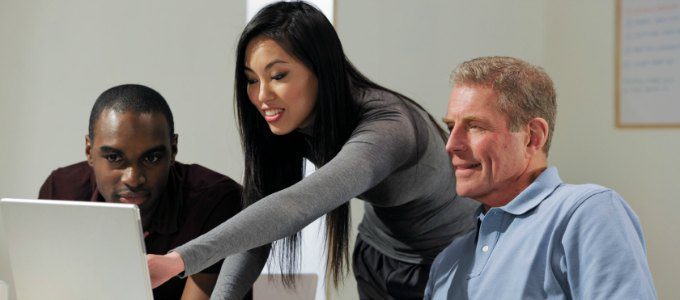In the spring of 1965 Jack Weinberg, a free-speech-movement activist and graduate student at the University of California, Berkeley, told a reporter that young people should not trust anyone over 30, and it became one of the most memorable expressions of the turbulent 1960s era. On what’s nearly the 50th anniversary of his statement, I began to wonder if today’s millennials are thinking the same statement today.
I interviewed Donna Venable, senior vice president of human resources for Ricoh Americas, on some research her company recently published on Generation Gap 2.0 (read about 1.0 here). We discussed the gap, how it impacts learning and tried to find out how far we’ve come in the past years on generational divides or if Weinberg’s words still resonate with young Americans.
Let’s talk about work ethic. Do you think millennials’ work ethic is different than generations before them? Do the older generations think it’s different?
Venable: Yes. I believe there are differences between the work styles of younger workers and older workers. Some call this Generation Gap 2.0 — an intergenerational tension that resonates in today’s U.S. workplace as many younger workers question older colleagues’ competence and many older workers question younger workers’ commitment. In a recent Ricoh Americas/Nielsen Harris online survey of more than 1,000 working adults (aged 18+), the majority of employed adults believed younger workers are frustrating when it comes to work ethic (69 percent) and that millennials are less industrious (59 percent).
It’s not that Gen Y has a poor work ethic; they actually have a very good work ethic. It’s just the definition of work ethic is different across the generations. For example, GenY wants work to be flexible, fun and believe their work is making a difference, while older generations are more concerned with working your way up the ladder or perhaps putting in overtime to prove yourself.
Generation Gap 2.0 is partially the result of different formative experiences. Gen Yers grew up with the Internet at their fingertips. Texting, social networking and digital communications are as natural and valid to them as face-to-face conversations. For older workers, digital communications are often seen as an inadequate or frustrating substitute for face-to-face interactions.

The bottom line is in the interpretation — a highly functioning workplace functions best with a mix of work styles, much as a winning baseball team needs a mix of good pitchers, hitters and fielders. The key is to learn about one another and work together, encourage each other’s strengths and challenge each other to have a better outcome overall.
I assume these perceptions affect mentorship. How can things like reverse mentoring work if older employees are grousing about the work habits of younger employees and younger employees complaining about once again helping older colleagues?
Venable: In the survey we recently conducted, when workers were asked to identify which generations make the best mentors, they generally chose their own generation. In fact, those ages 18-34 (27 percent) are three times as likely as those ages 35-44 (8 percent), 45-54 (4 percent) and 55-64 (5 percent) to cite GenY as the best mentors.
This feeling is more of an undercurrent, a subtext, and definitely something business leaders need to manage. It could have implications for teams, employee training and mentor relationships if not managed well. While generations may suggest that they prefer a mentor from within their own generation, in fact the survey data shows they may learn more from more experienced individuals. Seventy-one percent of those surveyed say they learn more from older, more experienced colleagues than younger ones.
While cross-generational relationships can bring challenges, they can also bring great results. Companies should configure their mentorship and training programs with generational differences in mind. And the differences may not be what you think. There’s a lot for employees to learn from one another.
This is a loaded question, but what’s the solution here? How can we help close Generation Gap 2.0? Specifically, what can learning and development leaders do to help?
Venable: Learning and development leaders can help by taking a hard look at whether their business information is working for employees of every work style. Organizations focusing on developing information mobility will help employees (regardless of generation or work style) access the business information they need, in the right form on the right device, to complete the task at hand.
In addition, leaders can adopt a millennial mindset in their approaches to training. For example, short, simple videos are effective tools to communicate with the workforce on a variety of topics. I’ve found that all generations are responding to this, even though it was a request from millennials, because it is similar to how they get their information/news on a regular basis.
At Ricoh, we launched a Generational Council made up of employees from all functions and representing all generations. The Generational Council is designed to better understand the generational diversity in the workforce today and how we can best leverage strengths to better serve both our internal and external customers. We have begun to weave members of the generational council into other teams throughout our company, so that we have input from all generations when making business decisions.
There are several benefits to creating a specialized team who focuses on generational diversity, for example:
- Help encourage generations to work together and share knowledge.
- Foster an environment focused on teamwork and lessened conflict.
- Create a “common ground” honoring each generation’s unique contributions while focusing on their similarities.
- Encourage business leaders to be more flexible in their management styles.















